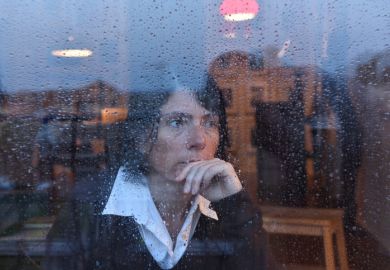Prime Minister David Cameron and Oscar-winning actor Jennifer Lawrence share a common cause: in the past year both have spoken out against the inequities of the gender pay gap. It seems that decrying the inherent injustice of men earning more than women is now so uncontroversial anyone can join in and gain instant feminist kudos. Now it is academia’s turn.
Data analysed by Times Higher Education show that women working in UK universities on full-time academic contracts earn roughly 11 per cent less than men. For professors, this pay gap is smaller, with women earning 5.8 per cent less than their male counterparts: a difference of £4,570 a year.
In a bid to tackle this persistent gender pay gap many universities have set in place mentoring schemes to support female academics to negotiate their pay and apply for promotions. The University of Essex has just gone further and announced – to much applause – that it will be eliminating its gender pay gap in one fell swoop, by awarding one-off pay increases to female professors averaging about £4,000 a year (“University of Essex hikes salaries for female professors to eliminate pay gap”, News, 2 June).
When politicians, celebrities and vice-chancellors alike compete to outdo each other in condemning the gender pay gap, such special additional payments come to be seen as a logical solution to a seemingly intractable problem. Yet much of the rhetoric around the pay gap is misleading, and awarding wages based on biology only patronises women.
Talk of a gender pay gap gives the impression that men and women are differently paid for doing the same work for the same amount of time, teaching the same students and sitting side-by-side in meetings. Indeed, we do not need to look back too far to find a time when, in many sectors of the economy, such discrimination was formalised through employment contracts that allocated men and women to separate salary scales. Today, however, the world of work is very different.
In academia, men and women share a common salary scale and people at the same level earn the same amount irrespective of their gender. There is no “like-for-like” pay gap. Discussion of a gender pay gap becomes meaningful only when averages are examined. The 11 per cent pay gap for academics is arrived at by comparing the earnings of all women and men on full-time contracts. Headlines about this gap attract attention but, in skating over key factors that influence an individual’s salary, they do women – and men – few favours.
Data from the Higher Education Statistics Agency show that women comprise 45 per cent of academic staff in UK higher education. However, there are quite considerable variations by discipline. Although women and men are almost equally represented in social studies and humanities, more men work in science, engineering and technology disciplines while more women are employed in education and subjects allied to medicine.
Although we may wish it were otherwise, people working at the cutting edge of scientific and technological research can command higher salaries because they have competitive employment options in the private sector that are rarely available to those working in humanities disciplines. Furthermore, discipline impacts upon career structure – which, in turn, has an effect on salary. Academics in education or nursing departments are likely to have spent the first part of their careers working as teachers or nurses. When they then embark on an academic career they compete against colleagues of the same age in other departments who are already in possession of a portfolio of publications.
Alarmist headlines ignore the historical legacy of the under-representation of women in academia. It was only in 1948 that women were first permitted to graduate from the University of Cambridge, but, by 1992, women had begun to outnumber men at undergraduate level. People nearing retirement age today began their careers in the mid-1970s when there were still very real discrepancies in the educational opportunities available to men and women. It is hardly surprising then that, today, across all disciplines, older – and therefore better paid – men are predominant. It takes time for such previous inequalities to work themselves out, but the falling average pay gap shows that this is happening.
The current discourse promotes a false perception that women are disadvantaged in academia and need special treatment to achieve equal status with their male colleagues. One-off payments to “compensate” for the average gender pay gap, such as the one made at Essex, reward biology rather than merit. They suggest that women should be paid more just for being female, rather than for publishing papers or generating funding. Female academics have no need for such pity-payments.
Finally, the gender obsession detracts from other, far greater, pay inequalities. Many women employed by universities work in catering or housekeeping. They clean the offices and make the coffee for academics. I suspect that they may well be envious of the additional £4,000 female professors at Essex are about to receive.
Joanna Williams is the author of Consuming Higher Education, Why Learning Can’t Be Bought and Academic Freedom in an Age of Conformity: Confronting the Fear of Knowledge.
POSTSCRIPT:
Print headline: Keep the pity payments
Register to continue
Why register?
- Registration is free and only takes a moment
- Once registered, you can read 3 articles a month
- Sign up for our newsletter
Subscribe
Or subscribe for unlimited access to:
- Unlimited access to news, views, insights & reviews
- Digital editions
- Digital access to THE’s university and college rankings analysis
Already registered or a current subscriber?







